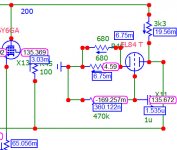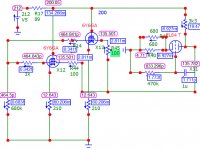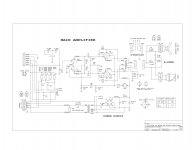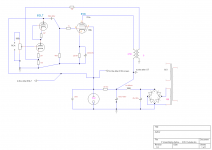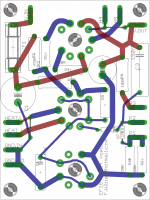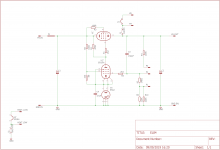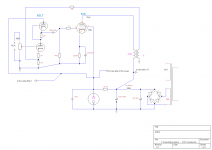I was wondering if it made sense and it was profitable to insert a shunt regulator into the screen circuit...
Attachments
Last edited:
Now I can see it. Low screen impedance is good, and reduces distortion.
It's worth trying if not too complicated.
It's worth trying if not too complicated.
Wait, you are using a shunt regulator for a sweep tube screen grid?
I was also wondering if it makes sense... does a VR tube make something similar?
Last edited:
I was also wondering if it makes sense... does a VR tube make something similar?
Yes, 150V 5-30mA stabiliser tube is called 150C1/150C2 or 0A2
I put a voltage source because I still can't understand how to correctly insert an OT on Microcap..
Attachments
Last edited:
Yes, 150V 5-30mA stabiliser tube is called 150C1/150C2 or 0A2
But I need 135, not 150 or 105, so I tried to figure out a different way.
... I could raise the anode voltage to 215 and let the screen work at 150 ( Someone has done it successfully), but they would work above their characteristics...
Last edited:
You can drop the required volts with a resistor. But honestly, you can build a far better and more efficient series regulator with two 6080 EF184 and a 85A2
How much current is really needed here? A combination tube could suffice. ECL or PCL etc...with a regulator.
There are three methods that lead to three different reactions in the event of a voltage surge ... VR tube would leave the voltage constant on the screen and not on the plate, the resistance would lead to a constant ratio between screen and plate, the shunt instead would be a middle ground. I would like to understand if it is worthwhile to shunt to the ground what is superfluous, complicating the circuit, or if it is not productive.
... I could raise the anode voltage to 215 and let the screen work at 150 ( Someone has done it successfully), but they would work above their characteristics...
That is the project...
Attachments
There is also an error in the schematic, anode of the SSRP? is coupled into the output tube.
If you just need regulated screens, you can order some boards from my design.
If you just need regulated screens, you can order some boards from my design.
Attachments
Member
Joined 2009
Paid Member
There are three methods that lead to three different reactions in the event of a voltage surge ... VR tube would leave the voltage constant on the screen and not on the plate, the resistance would lead to a constant ratio between screen and plate, the shunt instead would be a middle ground. I would like to understand if it is worthwhile to shunt to the ground what is superfluous, complicating the circuit, or if it is not productive.
Perhaps VR tube would have higher noise than a regulator.
fyi - Shindo used a simple FET based cap multiplier on screens. If you’re not adverse to using a FET, this would be simplest and possibly the best approach.
There is also an error in the schematic, anode of the SSRP? is coupled into the output tube..
6Y6 Single-Ended Amplifier, GT Valve Version - YouTube
(the original was like that)
Attachments
Last edited:
- Home
- Amplifiers
- Tubes / Valves
- A simple shunt regulator
